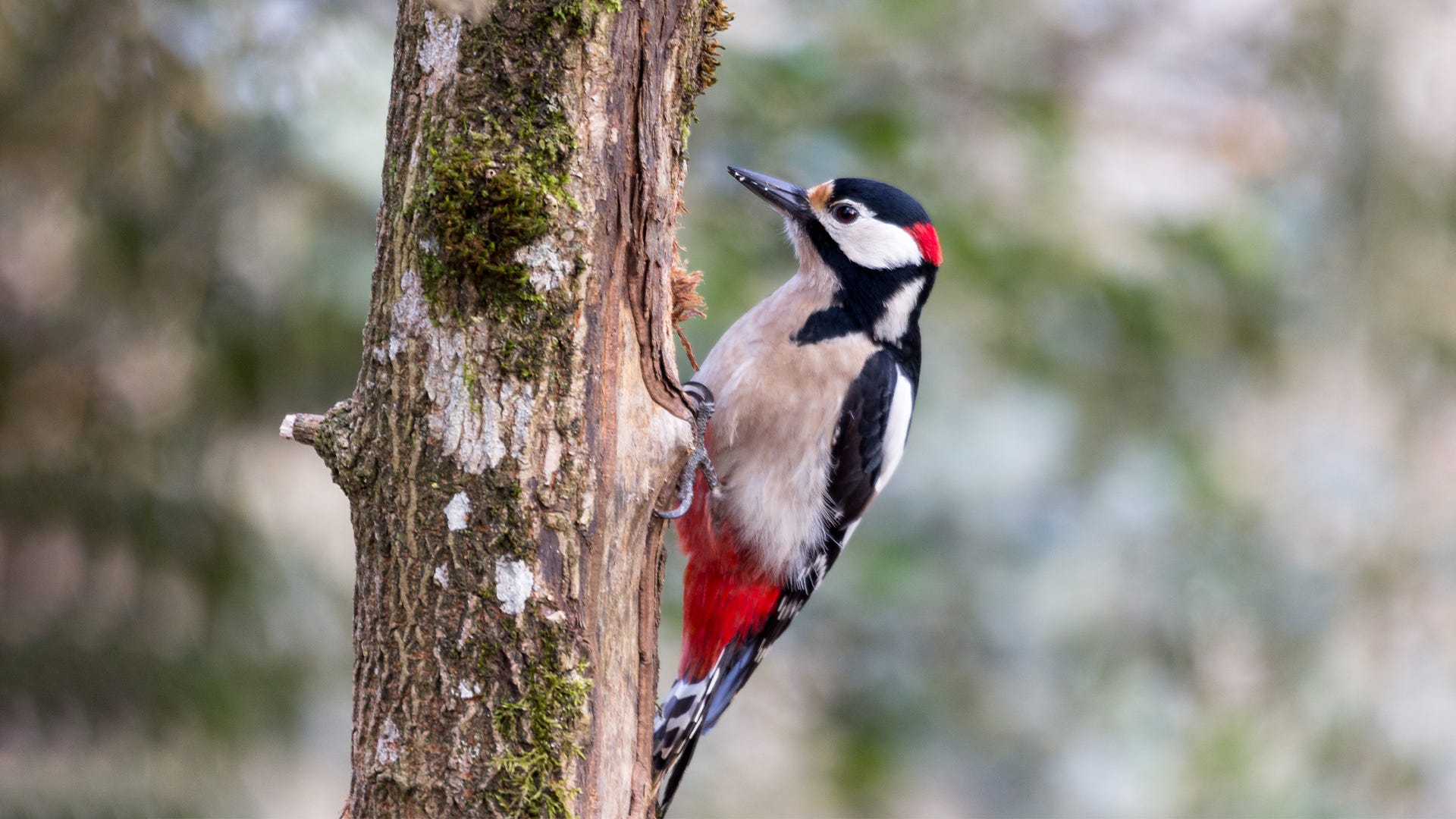Woodpeckers in Florida Population: Variety Introduction and Conservation
Woodpeckers in Florida Population: Variety Introduction and Conservation
Blog Article
Woodpeckers Unleashed: Exploring the Marvels of These Competent Tree Mountain Climbers
Woodpeckers, with their unique markings and balanced drumming resembling via wooded areas, hold an unique place in the avian world. Their specialized makeup and adjustments enable them to browse upright surface areas with unparalleled skill. Their proficiency of tree climbing is simply one element of their interesting actions. As we look into the intricate information of woodpeckers' nesting routines, feeding techniques, and the ongoing conservation initiatives to safeguard these impressive birds, a deeper admiration for their location in nature unravels.
Makeup and Adaptations
When examining the anatomy and adaptations of woodpeckers, one can observe remarkable features that allow these birds to grow in their specialized environmental particular niche. Additionally, woodpeckers have zygodactyl feet, with two toes facing onward and 2 facing backwards, supplying a firm hold on tree trunks while they look for food or drum for communication.
In addition, woodpeckers have a special tongue framework that is long, barbed, and sticky, enabling them to remove insects from holes in wood. This specific adjustment permits woodpeckers to manipulate a food resource that is hard to reach to several various other bird types. Overall, the composition and adjustments of woodpeckers display the impressive evolutionary options that have allowed these birds to flourish in their arboreal environment.
Drumming Actions
Having discovered the makeup and adjustments of woodpeckers, the emphasis currently changes to recognizing their drumming actions, a distinctive element of their communication and territorial display screens. Drumming is a crucial type of interaction among woodpeckers, serving numerous objectives such as developing areas, bring in companions, and signaling alarm. Each woodpecker species has a distinct drumming pattern that assists people acknowledge participants of their own species and differentiate them from competitors or predators.
Woodpeckers produce drumming audios by swiftly pecking on resonant surfaces such as dead trees, utility poles, or also steel objects, creating a collection of rhythmic beats. The strength and speed of drumming can vary based upon the purpose; for circumstances, a quick drumming sequence may symbolize hostility towards trespassers, while a slower and softer drumming pattern could show courtship (Woodpeckers in Florida). Furthermore, woodpeckers might readjust the regularity and duration of their drumming to convey particular messages successfully
Nesting Behaviors
Exploring the nesting behaviors of woodpeckers exposes interesting understandings right into their reproductive behaviors and environment selections. Woodpeckers are known for their special nesting choices, typically excavating tooth cavities in trees to create protected areas for raising their young. These cavities serve not only as a nesting website however also as a secure refuge from killers and severe climate.
Woodpeckers display a high degree of integrity to their nesting websites, typically going back to the exact same area every year. This habits highlights the value of appropriate habitat availability for their reproductive success. The option of a nesting website is important for woodpeckers, with elements such as tree species, height, and decay stage playing significant roles in their decision-making procedure.
Surprisingly, some woodpecker varieties are known to excavate numerous cavities within their region, providing themselves with different nesting choices. This technique might serve as a form of insurance versus possible threats or disruptions to their key nesting site.

Feeding Strategies
Woodpeckers utilize a range of specialized feeding techniques to procure their main food resources. Among one of the most distinct feeding behaviors of woodpeckers is drumming, which involves quick pecking on trees to uncover insects under the bark. This drumming not just assists them situate More Bonuses victim yet likewise works as a way of communication with other woodpeckers. Woodpeckers have solid, chisel-like beaks that permit them to pierce into wood easily. When an opening is developed, they utilize their long, barbed tongues to remove insects such as ants, beetles, larvae, and spiders. These tongues are coated with sticky saliva that aids trap the prey. Woodpeckers are likewise recognized to dig deep into cavities in trees to gain access to covert insect larvae or sap. Some species, like the acorn woodpecker, shop nuts in specially developed openings called granaries. This strategic saving of food helps them make it through throughout food check my source scarcity durations. Woodpeckers are absolutely amazing in their feeding strategies, showcasing versatility and intelligence in obtaining their nutrition.
Conservation Efforts
Among the detailed feeding techniques showed by woodpeckers, the preservation initiatives targeted at protecting these fascinating birds play an essential duty in maintaining their environments and populations. Woodpeckers deal with various threats to their survival, including habitat loss because of deforestation, climate modification modifying their ecosystems, and collisions with manufactured frameworks such as structures and vehicles - Woodpeckers in Florida. Conservationists are actively functioning to resolve these obstacles and ensure the lasting well-being of woodpecker species

Education and learning and public recognition projects are likewise important components of woodpecker conservation initiatives. By raising recognition about the value of these birds in maintaining healthy and balanced woodland ecosystems, conservationists can gather assistance for habitat preservation campaigns and advertise liable land management methods. With collaborative efforts between researchers, policymakers, and regional neighborhoods, we can interact to secure a future where woodpeckers flourish in their all-natural habitats.
Conclusion

Report this page